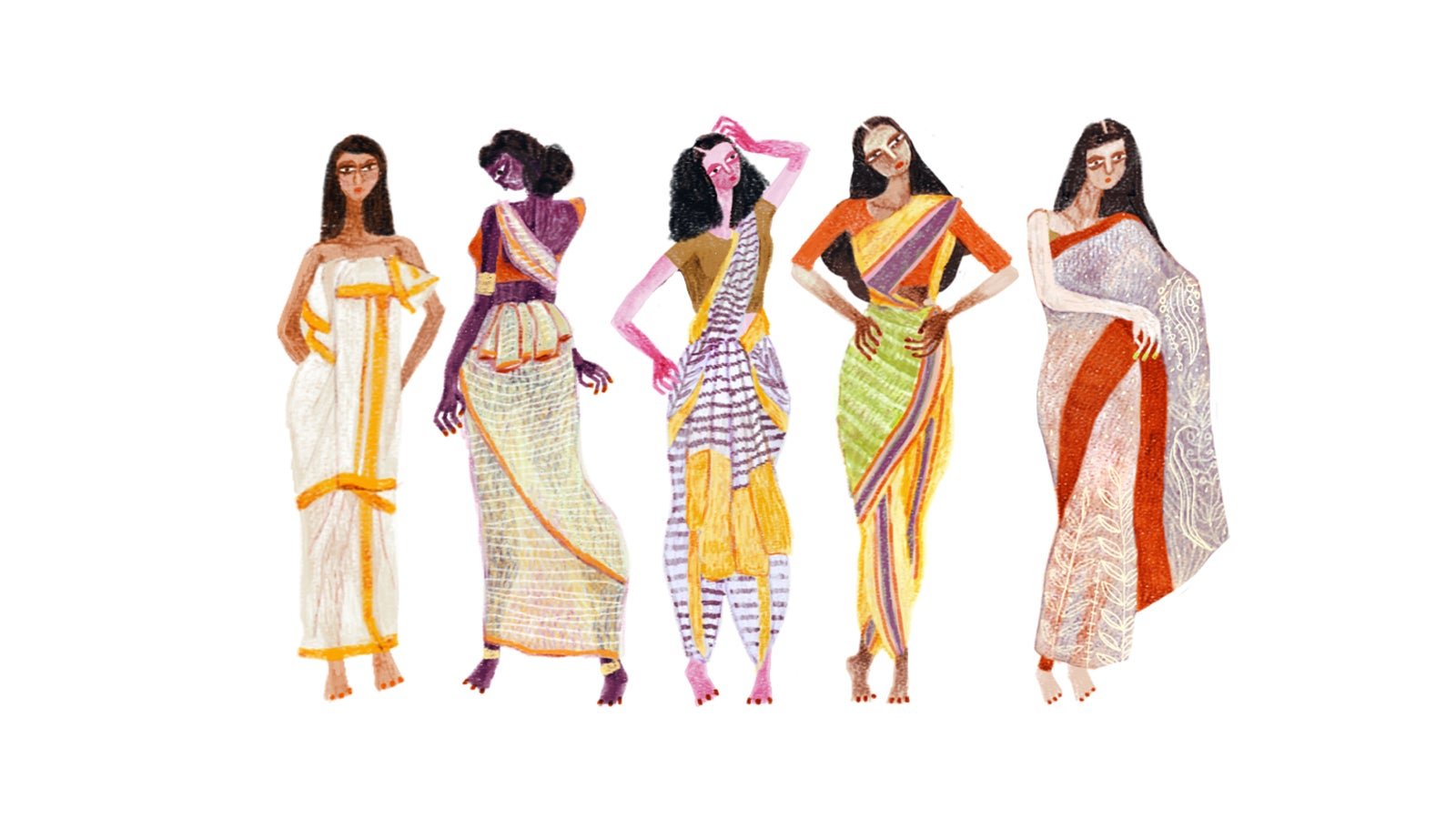There are 100 ways to wear a sari—how many do you know?
For many women in urban India, wearing a sari is a daunting prospect.


For many women in urban India, wearing a sari is a daunting prospect.
That’s because the Nivi drape, with origins in the southern Indian state of Andhra Pradesh, often reigns supreme—pallu, or the loose end of the sari, over the left shoulder, six to eight crisp pleats in the front, and an astounding number of safety pins holding it all together.
The pressure of doing all this by yourself means the iconic garment is nowadays often restricted to graduation ceremonies, weddings, and festivals, not daily wear.
Yet, there are over 100 different ways to wear a sari, and some of them don’t even require safety pins. It’s these unconventional styles that Bengaluru-based creative agency Border & Fall is now trying to popularise in urban India by building a digital library of different drapes.
“We’ve had that image (of the Nivi drape) affirmed and re-affirmed through every platform that someone would look to engage in, whether it’s through Bollywood, through media, through fashion, through e-commerce, and through what people see on the street in urban India,” Border & Fall founder Malika Verma Kashyap said, noting that this singular representation of the drape has stood in the way of the garment being adopted more widely today.
For their 2016 sari survey, an attempt to see how the garment is perceived in urban metropolises, Border & Fall interviewed 50 women aged between 16 and 45 from a range of socioeconomic backgrounds in Bengaluru, Mumbai, and New Delhi. Of these, 20% said they didn’t know how to drape a sari by themselves and 28% could do so with some assistance.
Many said they wore saris for weddings and festivals but only 17% did so for corporate events. What’s more, when an overall sample of 100 persons (including 50 men) was asked how many ways a sari could be worn, an overwhelming majority (98%) said “less than 15,” suggesting there’s a lot to learn.
Border & Fall is now raising money via Kickstarter to fund an ambitious project that will, through film, document 84 different ways of draping a sari, creating an archive of some less intimidating styles. The goal is to re-introduce other ways of draping that could help more Indian women wear the sari on a regular basis, drawing inspiration from regional styles. These include the Pin Kossavam drape from Tamil Nadu, which is usually worn without a petticoat, and the Maar Kachha style from Kerala, where the sari is wrapped around the body like a sort of strapless dress.
Interestingly, the most common way of wearing the sari today, with a blouse and a petticoat, itself emerged as an adaptation to Victorian social mores under the British, who frowned upon it being worn over bare breasts, as was the norm in India till then.
Since then, though, changes have been few and far between, even as Indian life transformed completely, especially in the metropolises. As a result, the sari has increasingly been crowded out by western formals, kurtas, and jeans.
But things are beginning to change again, thanks in part to online movements such as the viral #100sareepact that invited women to wear saris 100 times in a year, sharing images on Facebook and Instagram, along with personal histories and anecdotes.
But Border & Fall believes there’s a long way to go.
“Let’s not ask why women aren’t wearing (saris); let’s ask, what does it look like on a woman today,” Verma Kashyap said.